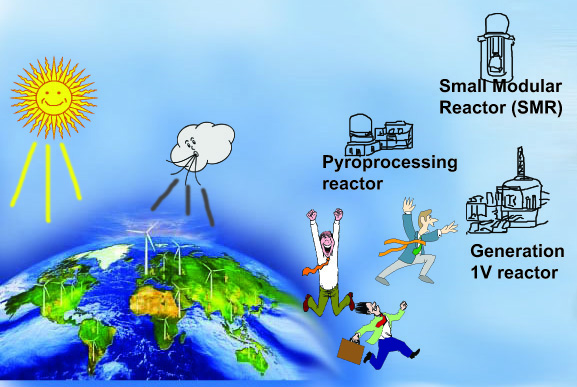John Quiggan demolishes the case for Small Modular Nuclear Reactors in South Australia
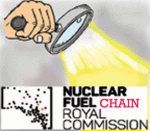 JOHN QUIGGIN John Quiggin is Professor of Economics at the University of Queensland.
JOHN QUIGGIN John Quiggin is Professor of Economics at the University of Queensland.
John Quiggan’s Submission to the #NuclearCommissionSAust addressed Question 3.2 of the Issues Papers:
“Are there commercial reactor technologies (or emerging technologies which may be commercially available in the next two decades) than can be installed and connected to the NEM?”
Extract “….Business SA wants Australia to adopt the PRISM reactor, a so-called Generation IV design. Unfortunately, “design” is the operative word here: PRISM is, literally, still on the drawing
(Tell them they’re dreaming • Inside Story http://insidestory.org.au/tell-them-theyre-dreaming 3 of 4 26/06/2015)
It does not exist even in prototype form. The US Department of Energy, along with designers GE and Hitachi, looked at the idea of building such a prototype at the Department’s Savannah River plant a few years ago, but the project has gone nowhere.
Much the same is true of another popular piece of nuclear vaporware, the “small modular reactor.” All but one of the American firms hoping to produce a prototype have abandoned or scaled back their efforts. The remaining candidate, NuScale, is hoping to have its first US plant operational by 2024, with commercial-scale production some time in the 2030s.
And, of course, there’s no guarantee that the new designs will work in economic terms, or that the problems of waste disposal and proliferation can be resolved. Even assuming this optimistic projection is met, small modular reactors aren’t going to be a viable option for Australia any time soon.
Unfortunately, that didn’t stop the Bureau of Resources and Energy Economics from asserting, in its 2012 Australian Energy Technology Assessment, that “SMR technology could potentially be commercially available in the next five to ten years” and presenting it as a low-cost option for 2020. This absurdly optimistic claim was abandoned in the 2013 update, which drastically increased the estimated costs and dropped the claim that the technology would be feasible in 2020.
There is still a chance for nuclear power to contribute to decarbonisation of the global economy in China and other countries with an existing program or the state power to force through a crash program. But these conditions don’t exist in Australia, and there is no serious prospect that they will do so in time to play a substantial role in decarbonisation. Anyone who pretends nuclear power is a serious option for Australia under current conditions is dreaming or, worse still, deliberately diverting attention from the real issues. ……….” http://nuclearrc.sa.gov.au/app/uploads/2015/09/John-Quiggin-29-06-2015.pdf
Woomera the suitable site for a nuclear waste dump – Senator Rex Patrick
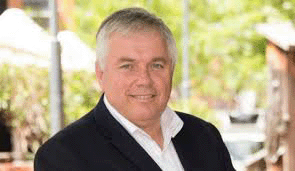 Woomera must be considered fWor radioactive waste facility, Senator Rex Patrick says https://www.adelaidenow.com.au/business/sa-business-journal/woomera-must-be-considered-for-radioactive-waste-facility-senator-rex-patrick-says/news-story/3b8171ca619079bc36b1b35c19861cf9?fbclid=IwAR0FQ-25ObeztDdNn5d9xLWOpJuDHJkaEBAIIT9r6sSpj52tRW_uTaCCLhc Erin Jones, Regional Editor, The Advertiser, November 28, 2018 Renewed calls have been made for Woomera to be considered as the site for the national nuclear waste repository to end the divide in two South Australian country towns.
Woomera must be considered fWor radioactive waste facility, Senator Rex Patrick says https://www.adelaidenow.com.au/business/sa-business-journal/woomera-must-be-considered-for-radioactive-waste-facility-senator-rex-patrick-says/news-story/3b8171ca619079bc36b1b35c19861cf9?fbclid=IwAR0FQ-25ObeztDdNn5d9xLWOpJuDHJkaEBAIIT9r6sSpj52tRW_uTaCCLhc Erin Jones, Regional Editor, The Advertiser, November 28, 2018 Renewed calls have been made for Woomera to be considered as the site for the national nuclear waste repository to end the divide in two South Australian country towns.
Centre Alliance Senator Rex Patrick said the 122,000sq km Woomera Prohibited Area should be revisited after a freedom of information document showed the reasons why it was rejected were “shallow”.
His calls come as Kimba and Hawker remain in limbo as to whether they will be chosen to host the low-level waste facility, with community ballots delayed until early next year.
“We have a divided community in both Hawker and Kimba and there is a site that may well be very suitable but has been dismissed on very shallow grounds,” Senator Patrick said
“We need to revisit the defence site properly.”
Renewed calls have been made for Woomera to be considered as the site for the national nuclear waste repository to end the divide in two South Australian country towns.
Centre Alliance Senator Rex Patrick said the 122,000sq km Woomera Prohibited Area should be revisited after a freedom of information document showed the reasons why it was rejected were “shallow”.
His calls come as Kimba and Hawker remain in limbo as to whether they will be chosen to host the low-level waste facility, with community ballots delayed until early next year.
“We have a divided community in both Hawker and Kimba and there is a site that may well be very suitable but has been dismissed on very shallow grounds,” Senator Patrick said.
“We need to revisit the defence site properly.”
Woomera was one of four defence sites in SA to be identified by the Federal Government that met suitability criteria for the repository.
The Defence Department, in 2016, said it did not support the facility at Woomera as it was “incompatible” with its weapons testing range and missile launch site.
However, a 2002 Education, Training and Science Department report found the site would be a preferred location, in part because both low and intermediate-level radioactive waste had been stored there since 1994-95 without incident. This includes the CSIRO storing 10,000 drums of waste at the site.
Resources Minister Matt Canavan told The Advertiser the site was unsuitable due to defence operations. He said waste at the site must be moved outside of the controlled defence area.
Woomera was identified by the Howard Government as the potential repository site in 1998, but was shelved following backlash from the Rann Government.
Sisters of St Joseph make a powerful case against radioactive trash dumping
Why would any reasonable society actually WANT to expose themselves to danger and the
greatest known risk to human kind and for a completely incomprehensible time of at least
100,000 years till the danger of contamination of earth, waters and human beings subsides!!!
For money? For jobs?
What substitute is money and jobs for some at the cost of clean air, uncontaminated water,
uncontaminated land for food growing, a safe environment to bring up children, a healthy
environment to bring up children, a clean environment for every generation?
What extraordinary motivation is driving those who want to risk all this to involve South
Australia our homeland further into the contamination from which there will be no return?
 Josephite SA Reconciliation Circle
Josephite SA Reconciliation Circle
Royal Commission into the Nuclear Fuel Cycle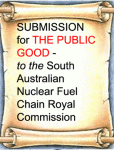
SUBMISSION TO ISSUES PAPER 4 “…Regarding the storage of high level (or nuclear long lived) waste, the Royal Commission must
• accept and
• make perfectly clear to the citizens of South Australia
that there are simply NO World’s Best practice for the storage of high level (or nuclear long
lived) waste.
The material is simply too dangerous, will live on dangerously for an outrageous 200,000
years (CCSA 2015) – and despite the fervent hopes ofthe nuclear industryIlobby- there are
no technological solutions to its safe storage – now or likely to be in the foreseeable future
and quite possibly never.
Unfortunately there is no safeguard in the assurances of those who claim that the situation is
safe and weapons proliferation won’t happen ‘because we say it won’t ‘.
As long term South Australian citizens our members are well placed to know that –
in the Ernul Maralinga nuclear explosions and the later even more damaging so called ‘minor
trials’ which contained plutonium there were ready assurances given by those whose vested
interests were served by the nuclear explosions going ahead. (as quoted in 1.8. above)
The effects of the Emu and Maralinga fallouts affected many South Australians particularly
those living in the remote Far West and North West of our state and in the areas around
Coober Pedy. Many were Aboriginal and their life style of ground cooking and other factors
placed them in an extremely vulnerable position. This experience – personal in most cases
and to their families in others – is what galvanised the Senior Women Elders of Coober Pedy,
known as the Kupa Piti Kungka Tjuta (KPKT) to lead what became the national successful
campaign of 1998-2004 against the Federal Government’s imposition of a national radioactive
dump on their land.
All of us were living when the Government used the country for the bomb…Some were living at
Twelve Mile, just out ofCoober Pedy… Whitefellas and all got sick. When we wereyoung, no
women got breast cancer or any other kind ofcancer. Cancer was unheard of with me either and
no asthma. We were people without sickness.
The Government thought they knew what they were doing then. Now again they are coming
along and telling us poor blackfellas, ‘Oh, there’s nothing that’s going to happen, nothing is going
to killyou.’And that will still happen like that bomb over there. KPKTApril 1998 Continue reading
Your Say: Immoral and illegal for Jay Weatherill to spend taxpayer money to promote nuclear waste dump
 Peter Lazic 12 Sep 2016 What consent does Jay Weatherill have to spend $600 million dollars of taxpayer money to plan a nuclear waste dump, when the proposed dump may never get approved. This and the money spent to date on the Royal Commission, the road show, now TV advertisements, etc, is obscene and immoral
Peter Lazic 12 Sep 2016 What consent does Jay Weatherill have to spend $600 million dollars of taxpayer money to plan a nuclear waste dump, when the proposed dump may never get approved. This and the money spent to date on the Royal Commission, the road show, now TV advertisements, etc, is obscene and immoral
Ed note : Especially as the SA Law says:
13—No public money to be used to encourage or finance construction or
operation of nuclear waste storage facility Nuclear Waste Storage Facility (Prohibition) Act 2000https://www.legislation.sa.gov.au/LZ/C/A/NUCLEAR%20WASTE%20STORAGE%20FACILITY%20(PROHIBITION)%20ACT%202000/CURRENT/2000.68.UN.PDF
http://nuclear.yoursay.sa.gov.au/get-invol…/statewide-survey
Alinytjara Wilurara Natural Resources Management Board – response to Nuclear Royal Commission

 The Alinytjara Wilurara Natural Resources Management Board – reponse to Tentaive Findings of Nuclear Fuel Cycle Royal Commission
The Alinytjara Wilurara Natural Resources Management Board – reponse to Tentaive Findings of Nuclear Fuel Cycle Royal Commission
Senator Scott Ludlam – jobs, economics, national aspects of Nuclear Royal Commission’s findings
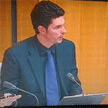 SENATOR SCOTT LUDLAM AUSTRALIAN GREENS SENATOR FOR WESTERN AUSTRALIA – Response to the Tentative Findings of the South Australian Nuclear Fuel Cycle Royal Commission
SENATOR SCOTT LUDLAM AUSTRALIAN GREENS SENATOR FOR WESTERN AUSTRALIA – Response to the Tentative Findings of the South Australian Nuclear Fuel Cycle Royal Commission
“………I would like to point to some research conducted by the Climate Institute that was done in collaboration with Ernst and Young and identifies that there is potential in South Australia to produce enough renewable energy to power 3,000,000 homes, remove pollution equivalent to 450,000 cars, and create close to 5,000 new jobs.
The report suggests that if a renewable energy industry were pursued there could be the creation of 5,178 new jobs including 1,300 permanent ongoing jobs, 2,688 jobs during construction and over 1,189 jobs in manufacturing.
It was very encouraging in December 2015 to see the South Australian Government release the “Low Carbon Investment Plan for South Australia” which looked at a $10 billion investment in low carbon energy – with the hope that by 2025 renewable energy would power 50% of South Australia and 100% by 2050ii . It seems that South Australia is making leaps and bounds, even without this significant investment. It was also encouraging to hear Premier Jay Weatherill’s commitment to renewable energy at the Paris climate summit. Being at the cutting edge of renewable energy technology suits South Australia. I welcome the commitment, enthusiasm and the exciting opportunities this presents to the state……..
While we welcome the preliminary finding that there are no prospects for nuclear power it is disturbing the preliminary findings ignore many serious and ongoing issues with the industry. While the economics are a clear barrier to nuclear power there are a range of safety issues that should be considered as well as suite of safeguards and proliferation considerations that do not appear to have been addressed by the NFCRC……..The world’s only deep geological repository that contains waste is the Waste Isolation Pilot Plant in New Mexico, USA. The Onkalo facility in Finland has been in the pipeline since 1983, and the total expected costs for the waste disposal is upward ofAUD $4.4 billion. The Sure facility in France is still under construction but earlier this year there was a collapse in the tunnel killing one worker and injuring and trapping another.
The WIPP facility, designed to contain radioactive waste for 10,000 years had a major radiological incident due to a chemical explosion within the first decade. 21 individuals received low level internal contamination; and there was a measurable leak of waste from the site discharged directly into the environment. The trial facility cost $19 billion to establish and will cost another half a billion to clean up after the 2014 radiation leak. The facility is still closed as the clean-up continues two years later.The preliminary findings of the NFCRC make no mention of the issues at WIPP or other facilities. This lack of consideration of real examples of waste management failures is a clear diversion from the fact based premise of the Royal Commission.Consideration of deep borehole waste storage also relies on optimism rather than evidence. There is no operating or trial deep borehole waste storage globally. There is one proposed trial in the US that will not be using radioactive waste.
The economic scenario put forward by Senator Sean Edwards to take International waste has been heavily criticised. Some of the issues with the Senator Edwards proposal identified by leading Australian economists include:• There is no plan for the management o fthe 56,000 tonnes of waste out of the 60,000 tonnes of waste proposed to be imported.
• There is no plausible case for the suggestion that another country would pay Australia US $lmillion per tonne to dispose of waste
- The proposal to convert nuclear waste into fuel for PRISM reactors is not warranted given that PRISM reactors don’t exist, and trials of PRISM reactors have been abandoned due to unacceptable risks
Over the last 30 years Australia has failed to come up with an acceptable solution for managing our own nuclear waste. The proposal to store international radioactive waste relies on Australia doing what other countries have failed to do since the inception of the industrial nuclear industry.
This issue is not just an issue for South Australia but has relevance for all Australians and for people globally. http://nuclearrc.sa.gov.au/app/uploads/2016/04/Ludlam-Scott.pdf
Adelaide University questions the Nuclear Royal Commission’s attitude to Aborigines

 Comments on the Nuclear Fuel Cycle Royal Commission Tentative Findings of 15 February 2016 – University of Adelaide , Consent and the Siting of a Nuclear Waste Storage Facility By Mr John Podgorelec*, Dr Alex Wawryk and Dr Peter Burdon†
Comments on the Nuclear Fuel Cycle Royal Commission Tentative Findings of 15 February 2016 – University of Adelaide , Consent and the Siting of a Nuclear Waste Storage Facility By Mr John Podgorelec*, Dr Alex Wawryk and Dr Peter Burdon†
“……Given many Indigenous communites have already expressed opposition to a storage facility, potential conflict lies ahead. While the finding that free, prior and informed consent must be obtained is welcome, the question remains as to whether this will be followed by the existing, or future, governments. Although intended to guide government, the Tentative Findings arguably provide no strong assurance to communities. For example, they fall well short of making a finding that specific legislation be passed, or the Native Title Act be amended, to provide a right of veto over nuclear activities, including the storage of toxic wastes. ….
Michael Wallis-Smith examines indigenous, ethical, economic aspects of the Nuclear Royal Commission’s findings
A sad little Submission to the Nuclear Royal Commission – from Terrestrial Energy
Response to the Tentative Findings of the South Australian Nuclear Fuel Cycle Royal Commission – Terrestrial Energy
(Terrestrial Energy is a company marketing the not yet existent Generation IV nuclear reactors, such as , the Integral Molten Salt Reactor (IMSR))
“……There is little in the Tentative Findings to reflect the exciting commercial and manufacturing opportunities available in advanced nuclear technologies. South Australia might be well-positioned to proactively engage with this sector yet it appears to have been overlooked.
Terrestrial Energy strongly disagrees with the statement that innovative, non-lWR designs will not be
available for the foreseeable future…….http://nuclearrc.sa.gov.au/app/uploads/2016/04/Terrestrial-Energy.pdf
Humphrey Hunt calls for a federal referendum on The Royal Commission’s nuclear waste import plan
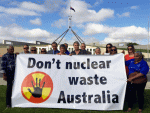 Humphrey Hunt’s Hand- written submission – recommends that there should be a federal referendum on the question of importing nuclear wastes, and he warns of the dangers to prsent and future generations http://nuclearrc.sa.gov.au/app/uploads/2016/05/Hunt-Humphrey.pdf
Humphrey Hunt’s Hand- written submission – recommends that there should be a federal referendum on the question of importing nuclear wastes, and he warns of the dangers to prsent and future generations http://nuclearrc.sa.gov.au/app/uploads/2016/05/Hunt-Humphrey.pdf
Nuclear Royal Commission: it is a National, not a State matter – Robin Foley
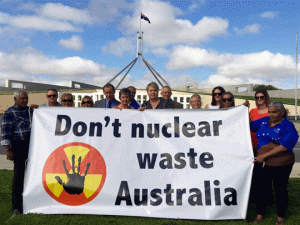 Nuclear Fuel Cycle Royal Commission Response – Robin Foley
Nuclear Fuel Cycle Royal Commission Response – Robin Foley
Nuclear Royal Commission downplays the safety and environmental risks of importing nuclear wastes – Gil Anaf
Royal Commission seems unaware of the toll of nuclear industries on scarce water supplies
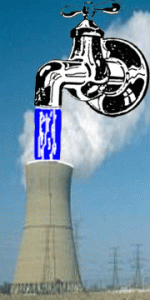 Deidre Allen – response to Nuclear Fuel Cycle Tentative Findings
Deidre Allen – response to Nuclear Fuel Cycle Tentative Findings
“………Nuclear energy requires extreme amounts of water in every stage of development.
Given that SA is the driest state in the driest continent we can not use this essential resource wastefully. http://www.answers.comlQlIs_South_Australia_the_driescstate_in_Australia.…..
- 56. 95. 141.
The idea of planning changes to current regulations in advance of public acceptance for any part of the nuclear industry is premature,
Surely parliament must first deliberate and decide whether to accept the nuclear industry, before changes are made to legislative requirements; that would allow the industry to proceed with any new developments….
74
There is no substantiated evidence that ‘Finland or Sweden have successfully developed long term domestic solutions’, neither project has begun.
There is no opportunity to say that their models are proven safe for a ten or even a fifty year period; let alone for the extended time of 250,000 or several hundred thousands of years, that is required…..
I’d like to submit that you have neglected to consider the impact of climate change. Sea water levels are predicted to rise. Land that for millions of years has been dry could again become submerged. http://www.theguardian.com/environment/2015/jul/10/scientists-predict-huge-sea-Ievel-rise-even-if-we-limit-climate-ehange
Without having to factor in climate change, an article in the Sunday Mail on Feb 21 quoted a Flinders University groundwater scientist, Professor Craig Simmons who has said “we need to think much longer term, 10,000 plus years, which is actually on geological time scales… Sea levels go up,
not one metre but hundreds of metres on these time scales, it’s totally different.”….
146a
With a 20- 30 year period of construction the likelihood of future politicians reversing any decision must not be prevented.
If a better safer option for disposing of nuclear waste was known to exist and to be achievable then it must be allowed to be adopted.
150 If the nuclear waste repository was breached and irradiated vast areas of land and water, all royalties earned by the SA Government would be lost in trying to repair the disaster. Indeed the cost to both the SA and Federal Governments would be inexhaustible……http://nuclearrc.sa.gov.au/app/uploads/2016/04/Allen-Deidree.pdf
Holly-Kate Whittenbury finds the Nuclear Royal Commission UNETHICAL
What is also extremely unethical is how the Commission has twisted the words of experts in favour of the dump; an example of this would be its claims, in tentative finding 78, p. 16, that the proposed areas are seismically suitable.
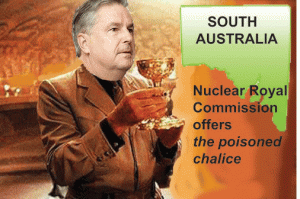 Submission response to ‘Tentative Findings’ – Holly-Kate Whittenbury
Submission response to ‘Tentative Findings’ – Holly-Kate Whittenbury
“……The Nuclear Fuel Cycle Royal Commission Tentative Findings Report contains many generously overstated ambitions, almost no analysis of the environmental, tourism or agricultural consequences with its focus on narrowly supported economic benefits. The media has claimed that there is ‘scientific consensus’ on supporting a waste facility for South Australia, despite there being many scientific professionals disagreeing with it.
Advocates for the facility have stated that as a state which supposedly ‘benefits’ from uranium mining in its far north, shipping the extracted products out to other countries, that we have a responsibility to deal with the waste created from such products. I disagree; it is questionable whether South Australia actually has benefited from mining as much as we are led to believe, with 83% of all mining profits going to overseas companies according to the Australian Institute’s paper #7, ‘Mining the Truth’ (Richardson, D. Denniss, R. 2011, p. 17).
This is a topic that we recently explored at University during our Environment: A Human Perspective course; it is what is known as ‘Privatizing profits, socializing losses’. Continue reading
Graham Glover scrutinises the language of the Nuclear Fuel Cycle Royal Commission
 Tentative Findings Response – Graham Glover http://nuclearrc.sa.gov.au/app/uploads/2016/04/Glover-Graham.pdf
Tentative Findings Response – Graham Glover http://nuclearrc.sa.gov.au/app/uploads/2016/04/Glover-Graham.pdf
Item 73 The risks associated with storing nuclear waste for many hundreds of thousands of years cannot be adequately assessed, considering the potential changes in geological, political, social, economical, environmental and global issues.

